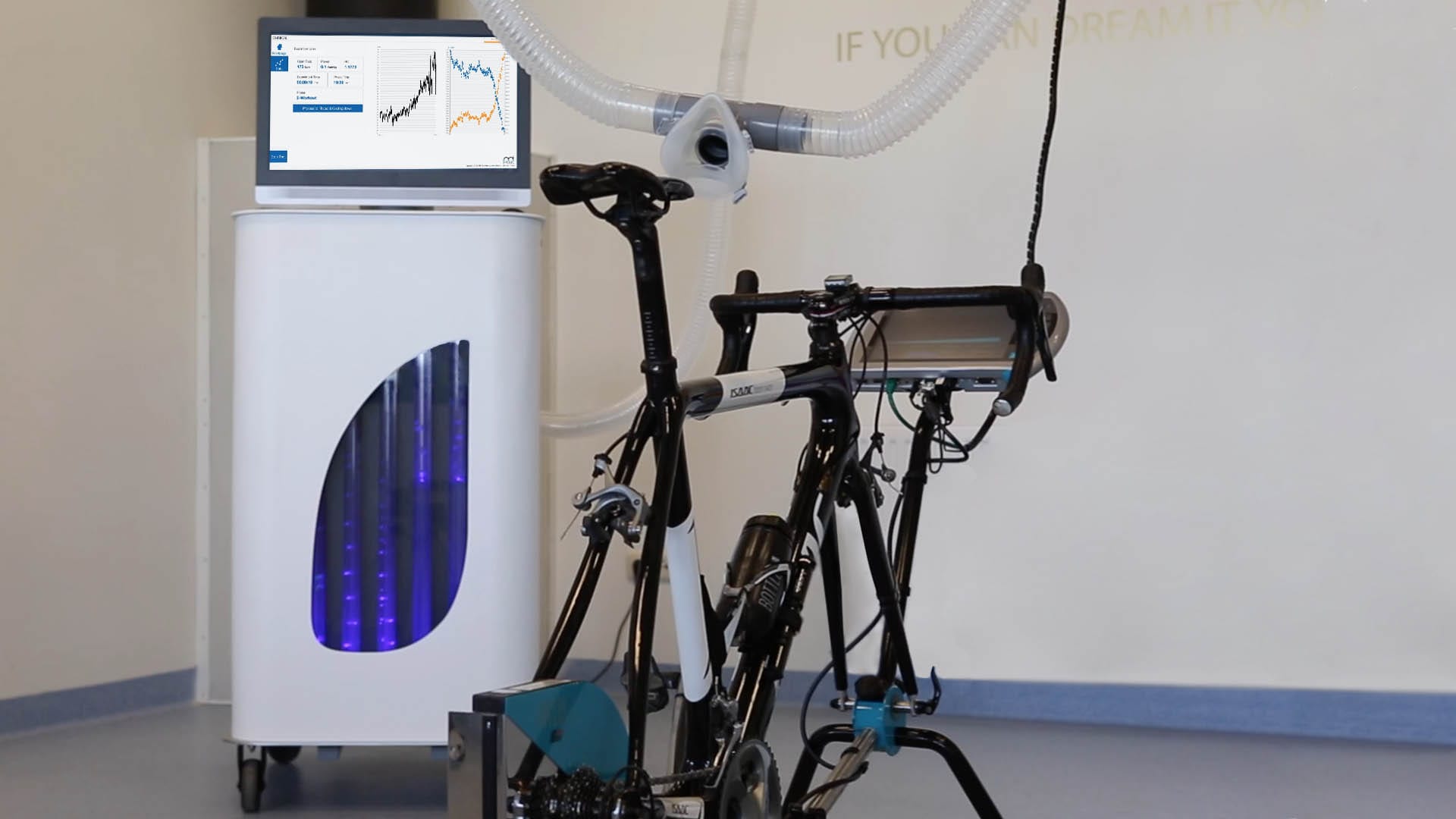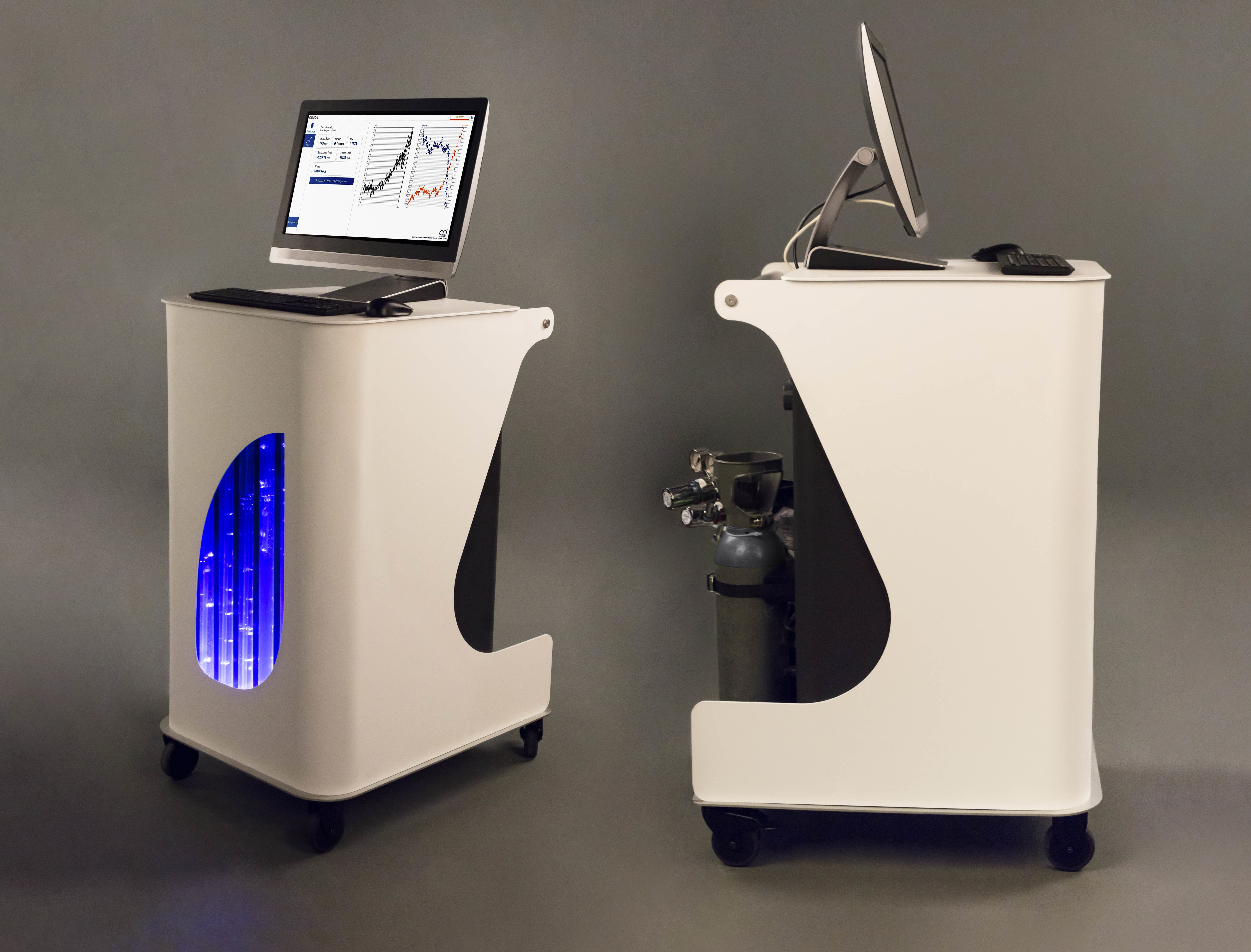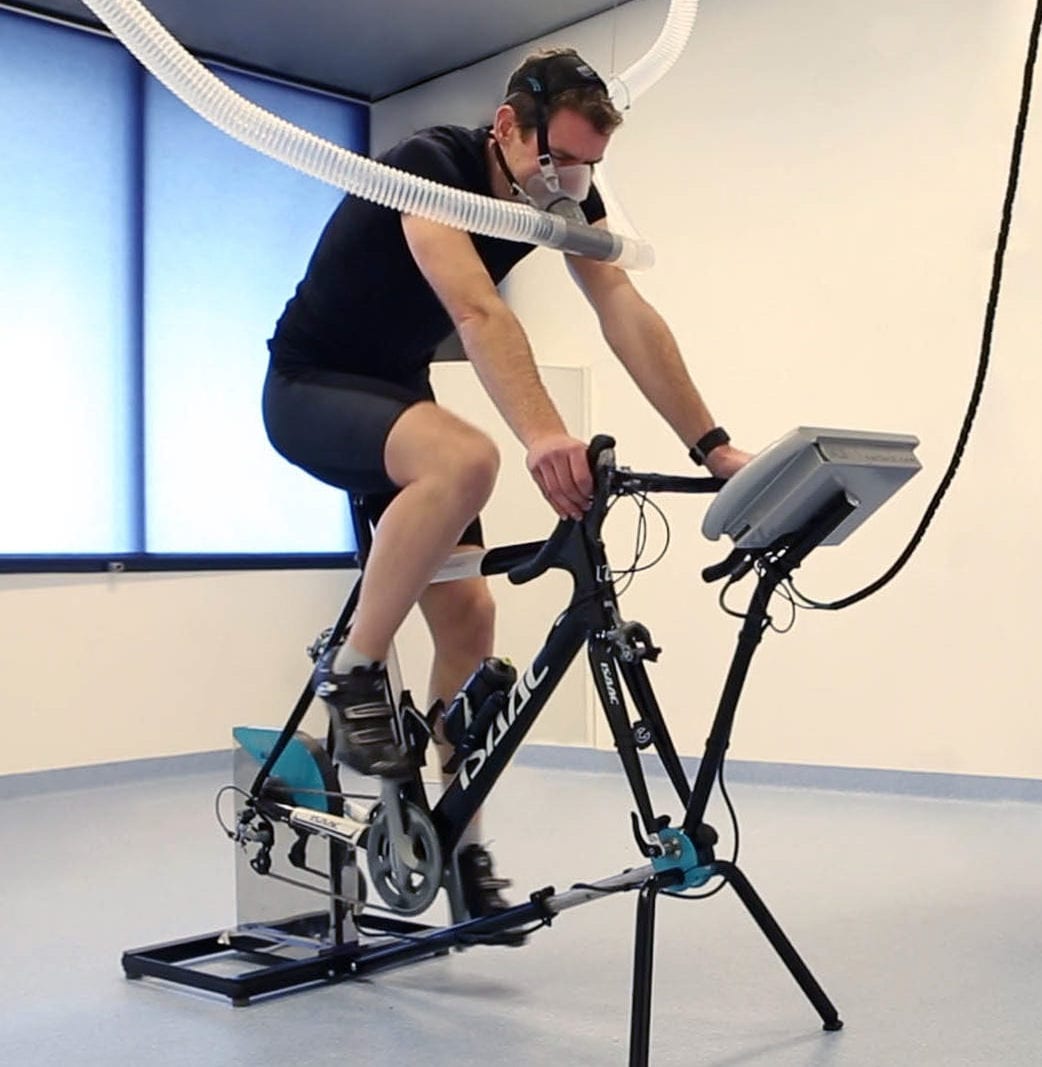Omnical Sport
 Highest validated Accuracy and Reliability
Highest validated Accuracy and Reliability
 Fastest data rate for both VO2 and VCO2 measurements
Fastest data rate for both VO2 and VCO2 measurements
 From resting metabolism to absolute maximum
From resting metabolism to absolute maximum
 No breathing restrictions
No breathing restrictions
Highly versatile and accurate
The Omnical product is the most versatile and accurate indirect calorimeter for research purposes on the market. Comprised of state-of-the-art technology using the highest class precision measurement instruments, it enables customers to perform studies in various research fields.
The system is designed to measure energy metabolism ranging from resting metabolism rate (RMR) to sports performance testing (e.g. VO2max tests) with high accuracy.


The Omnical Sport
The Omnical Sport indirect calorimeter comprises of four basic parts: a gas analysis system, the breathing unit (facemask), data analysis software and reporting software. With this method, the subject’s breathe flow is directed through a facemask and an optional flow unit to the gas analysis system.
- Omnical
- Breathing unit (facemask)
- Analysis software
- Reporting software
Optional
- Flow unit
- Validation kit

System performance
System accuracy
1% ± 2.0% SD or better for VO2 and VCO2 measurements @ 250mL/min oxygen consumption and 100 L/min flow.
Respiratory Quotient (RQ) = VCO2/ VO2 within 0.02 absolute.
High flow up to human physiological maximum, low flow for RMR infants
| Ventilation | 20-450L/min (higher range is possible on request) |
| O2 uptake | 0-8 L/min |
| CO2 production | 0-8 L/min |
High VCO2 and VO2 update rate
Live display of measurement values updated every 5 seconds.
Validation and scientific literature
Scientific publications featuring Omnical can be accessed on: https://www.indirectcalorimetry.net/research-publications-2/ and
Test-retest variability of VO2max using total-capture indirect calorimetry reveals linear relationship of VO2 and Power
Schoffelen, PFM, den Hoed, M, van Breda, E, Plasqui, G. Scand J Med Sci Sports. 2019; 29: 213– 222. https://doi.org/10.1111/sms.13324
Goal of the study
This study aimed to analyse the intra-individual variation in VO2max of human subjects using total-capture and free-flow indirect calorimetry. Twenty-seven men (27 ± 5 year; VO2max 49-79 mL•kg−1•min−1) performed two maximal exertion tests (CPETs) on a cycle ergometer, separated by a 7 ± 2 day interval.
Methods
VO2 and VCO2 were assessed using an indirect calorimeter (Omnical) with total capture of exhalation in a free-flow airstream. Thirteen subjects performed a third maximal exertion test using a breath-by-breath calorimeter (Oxycon Pro). On-site validation was deemed a requirement.
Results
For the Omnical, the mean within-subject CV for VO2max was 1.2 ± 0.9% (0.0%-4.4%) and for ergometer workload P max 1.3 ± 1.3% (0%-4.6%). VO2max values with the Oxycon Pro were significantly lower in comparison with Omnical (P < 0.001; t test) with mean 3570 vs 4061 and difference SD 361 mL•min−1. Validation results for the Omnical with methanol combustion were −0.05 ± 0.70% (mean ± SD; n = 31) at the 225 mL•min−1 VO2 level and −0.23 ± 0.80% (n = 31) at the 150 mL•min−1 VCO2 level. Results using gas infusion were 0.04 ± 0.75% (n = 34) and −0.99 ± 1.05% (n = 24) over the respective 500-6000 mL•min−1 VO2 and VCO2 ranges. Validation results for the Oxycon Pro in breath-by-breath mode were – 2.2 ± 1.6% (n = 12) for VO2 and 5.7 ± 3.3% (n = 12) for VCO2 over the 1000-4000 mL•min−1 range. On a Visual analog scale, participants reported improved breathing using the free-flow indirect calorimetry (score 7.6 ± 1.2 vs 5.1 ± 2.7, P = 0.008). We conclude that total capturing free-flow indirect calorimetry is suitable for measuring VO2 even with the highest range. VO2max was linear with the incline in P max over the full range

Figure: Scatterplot showing the test‐retest reproducibility in (A) Pmax, (B) VO2max and (C) VO2 peak as measured with the Omnical. The full line represents the regression line, and the dotted line indicates the line of identity
Assessment of resting energy expenditure and nutrient oxidation by indirect calorimetry: methodological implications
(Alcantara, 2021) https://digibug.ugr.es/handle/10481/65383?show=full
Summary
The results of the present Doctoral Thesis show that all the metabolic carts yielded different RMR and RER measures. The Omnical metabolic cart presented better accuracy and precision than the rest of metabolic carts, although the day-to-day biological reproducibility achieved by the Q-NRG and the Vyntus CPX was similar to the one achieved by the Omnical. The post-calorimetric correction procedure did not improve neither the comparability nor the day-to-day RMR and RER biological reproducibility in the four analyzed metabolic carts. On the other hand, we observed a strong association between the day-to-day biological reproducibility assessed with the CCM Express and the CPX Ultima CardiO2 metabolic carts. Finally, the longtime interval method for IC data analysis presented the best day-to-day RMR and RER biological reproducibility in four metabolic carts.
Result
Collectively, the results of this Doctoral Thesis suggest that the Omnical is the best metabolic cart for assessing RMR and RER among the six metabolic carts analyzed. Moreover, this Doctoral Thesis suggest that the day-to-day biological reproducibility is largely attributable to the individual’s characteristics and is not improved by the application of a post-calorimetric procedure based on the infusion of pure gases after the individual measurement. Finally, among the methods for IC data analysis, the long-time interval method seems to be the most adequate for analyzing the data provided by the analyzed metabolic carts.

Figure 5 – Percentage measurement error of oxygen consumption (VO2; Panel A), carbon dioxide production (VCO2; Panel B), energy expenditure (EE; Panel C) and measurement error of respiratory exchange ratio (RER; Panel D) across metabolic carts, as determined by alcohol burning (i.e. methanol combustion; white bars) and gas infusions (black bars). The percentage measurement error was calculated as ([measured value – expected value] / expected value) × 100 for and measurement error as (measured value – expected value). * represent significant differences (paired t-test) between the methanol combustion vs. the gas infusions values (n=3). Results are presented as mean and standard deviation.
Determining the Accuracy and Reliability of Indirect Calorimeters Utilizing the Methanol Combustion Technique.
Kaviani, S., Schoeller, D.A., Ravussin, E., Melanson, E.L., Henes, S.T., Dugas, L.R., Dechert, R.E., Mitri, G., Schoffelen, P.F., Gubbels, P., Tornberg, A., Garland, S., Akkermans, M. and Cooper, J.A. (2018), Nutrition in Clinical Practice, 33: 206-216. https://doi.org/10.1002/ncp.10070
Background
Several indirect calorimetry (IC) instruments are commercially available, but comparative validity and reliability data are lacking. Existing data are limited by inconsistencies in protocols, subject characteristics, or single-instrument validation comparisons. The aim of this study was to compare accuracy and reliability of metabolic carts using methanol combustion as the cross-laboratory criterion.
Methods
Eight 20-minute methanol burn trials were completed on 12 metabolic carts. Respiratory exchange ratio (RER) and percent O2 and CO2 recovery were calculated.
Results
For accuracy, 1 Omnical, Cosmed Quark CPET (Cosmed), and both Parvos (Parvo Medics trueOne 2400) measured all 3 variables within 2% of the true value; both DeltaTracs and the Vmax Encore System (Vmax) showed similar accuracy in measuring 1 or 2, but not all, variables. For reliability, 8 instruments were shown to be reliable, with the 2 Omnicals ranking best (coefficient of variation [CV] < 1.26%). Both Cosmeds, Parvos, DeltaTracs, 1 Jaeger Oxycon Pro (Oxycon), Max-II Metabolic Systems (Max-II), and Vmax were reliable for at least 1 variable (CV ≤ 3%). For multiple regression, humidity and amount of combusted methanol were significant predictors of RER (R2 = 0.33, P < .001). Temperature and amount of burned methanol were significant predictors of O2 recovery (R2 = 0.18, P < .001); only humidity was a predictor for CO2 recovery (R2 = 0.15, P < .001).
Conclusions
Omnical, Parvo, Cosmed, and DeltaTrac had greater accuracy and reliability. The small number of instruments tested and expected differences in gas calibration variability limits the generalizability of conclusions. Finally, humidity and temperature could be modified in the laboratory to optimize IC conditions.
RMR validation


 Highest validated Accuracy and Reliability
Highest validated Accuracy and Reliability  Fastest data rate for both VO2 and VCO2 measurements
Fastest data rate for both VO2 and VCO2 measurements From resting metabolism to absolute maximum
From resting metabolism to absolute maximum  No breathing restrictions
No breathing restrictions